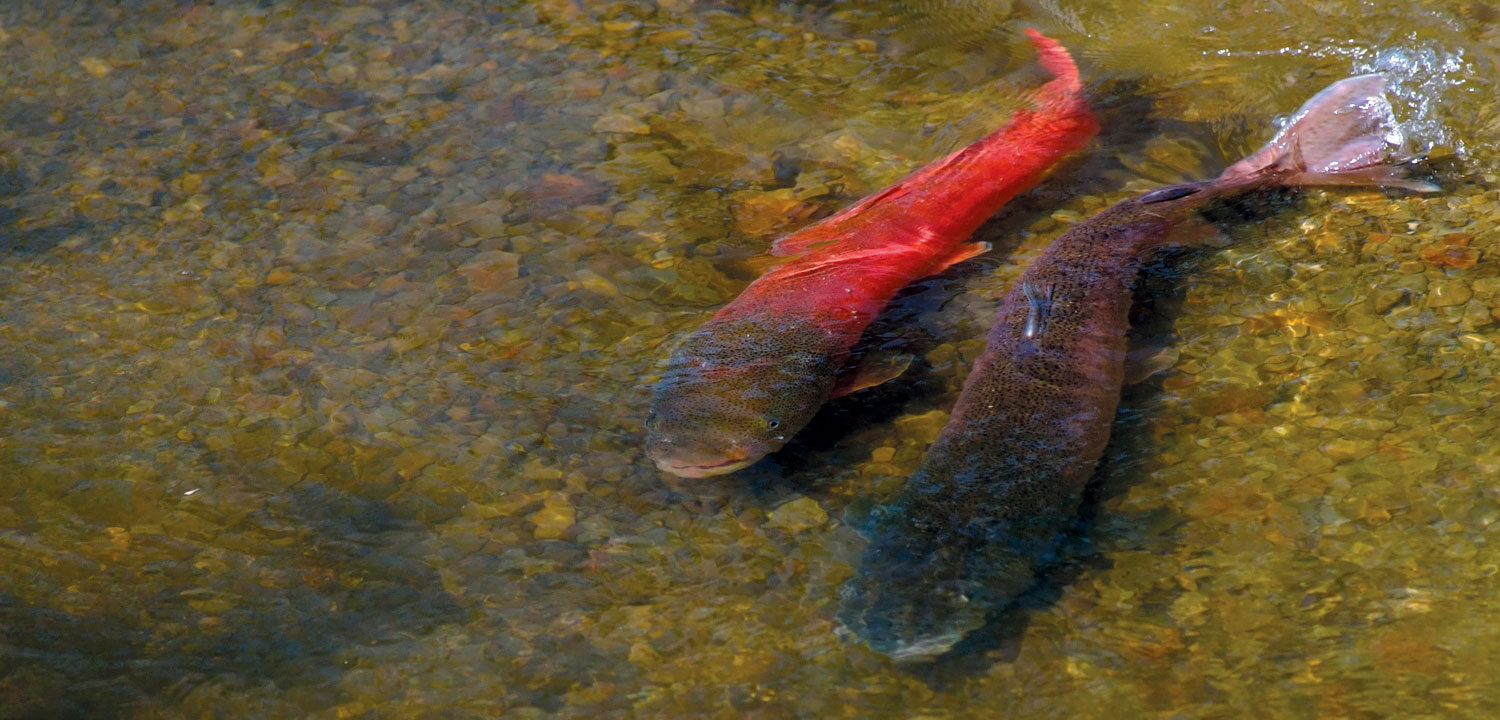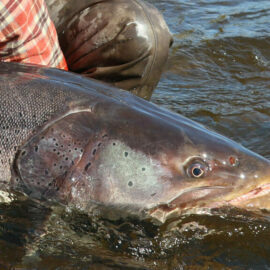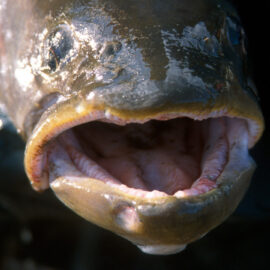New technology and international effort produces deeper understanding of rare giant taimen.
A new study published in the journal Global Ecology and Conservation shows how habitat protection has helped stabilize the population of Sakhalin taimen, a giant, rare species of salmon in northern Japan. The study, using new sonar technology, is the first successful effort to count adults during their spring spawning migration. Although considered one of the best protected and healthiest taimen populations left in Japan, the paper points toward dams and sport fishing as ongoing conservation threats to the species.
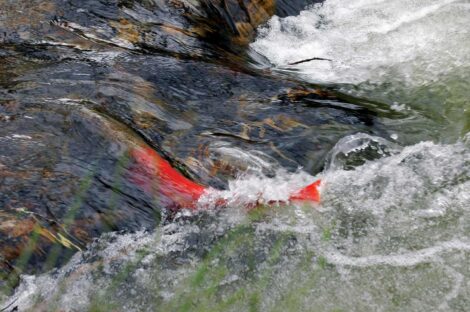
In 2009 a precedent-setting conservation agreement between Oji Paper Company, Itou no kai (a local conservation group) and the Wild Salmon Center resulted in the creation of the Sarufutsu Biodiversity Conservation Forest. This agreement resulted in the permanent protection of over 6,500 acres of critical riparian and floodplain habitat for taimen in Japan’s Sarufutsu River basin. Since the creation of the Conservation Forest a concerted effort has been coordinated by these partners to increase the understanding of the biology and status of the Sakhalin taimen.
Five species of taimen exist in Asia, and they are thought to represent the base of the evolutionary tree; a tree that gave rise to modern day trout and salmon. Taimen can live over 30 years and have been observed to reach sizes over two meters in length, making them the largest salmon in the world. Sakhalin taimen (Parahucho perryi), the focus of the new study, is the only taimen species that spend part of their life in the ocean. The species was added to the International Union for Conservation of Nature (IUCN) Red List as Critically Endangered in 2006.
“We set out in 2013 to add one more important ingredient to the conservation initiative on this river—to establish a field monitoring program that produces reliable counts of the taimen population,” said Pete Rand, Senior Conservation Biologist at the Wild Salmon Center and the study’s lead author. “Before the study, our population estimate was too low, so we’re pleased to report the total population exceeds 1,000 adults. This is very encouraging for those of us determined to conserve this enigmatic species.”
The study applied new technology to address an old problem in fisheries science—producing reliable data on population sizes for animals that are largely invisible to human observers. ARIS, a new sonar system that produces high quality video images from an array of sound beams, was used to document fish passage. “It could not have worked better,” said Rand. “We set the device in the river, and operated it continuously for four weeks, day and night and through periodic spring floods, capturing images of every single taimen passing through the study site.” The investigators counted 325 taimen during 2013, and 425 during 2014. By extrapolating to the entire river basin, the scientists estimated the river currently supports 1000-1250 adults.
While the overall message of the study is positive, the authors do highlight some ongoing concerns. “It is important to understand that the Sarufutsu River is very unique. The river has only been minimally modified by humans, and now enjoys added security in the form of the protected area,” said Michio Fukushima, a Senior Researcher at National Institute for Environmental Studies in Japan, and co-author of the study. “The species used to be found in over 40 rivers in Japan. Now, there are only seven rivers that support healthy populations, and the Sarufutsu is probably at the top of the list.”
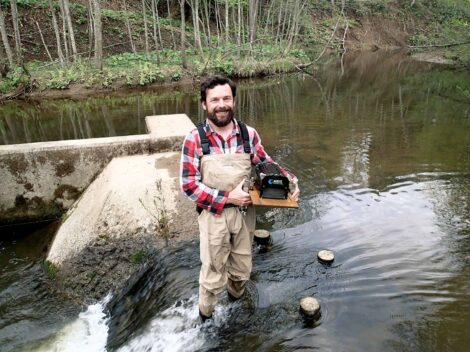
While the paper concludes the population in the Sarufutsu is relatively healthy, the authors point to two ongoing threats to Sakhalin taimen: barrier construction on the river and poor sport fishing practices.
Barriers, in the form of dams and road culverts, have long been recognized as a critical threat to the species. The study reported some difficulties for taimen passing a small, concrete dam. The authors hope this study will spur additional research and conservation activities to modify or remove problematic dams and river obstructions to benefit taimen, Pacific salmon and other migratory fishes in Japan.
One of the surprising conclusions of the study is that the sport fishery is capturing 50% or more of the adult taimen population each year. Although there are no taimen fishing regulations on the Sarufutsu River, the most common form of angling is catch-and-release. “Based on the results of our study, it is imperative that anglers handle these fish responsibly, and release them unharmed,” added Rand. “Establishing some level of fishing regulations, such as the use of barbless hooks and restricting the fishing season to protect spawners, would provide an important level of protection.”
The study was made possible by funds provided by Japan Society for the Promotion of Science, Fulbright Japan, Sumitomo Foundation, Mohammed bin Zayed Conservation Fund, and the Sarufutsu Itou Conservation Council.
